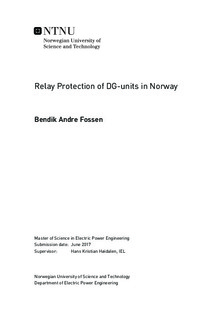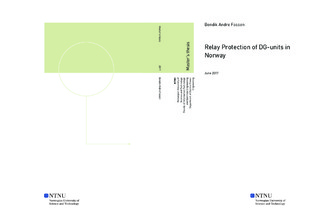| dc.description.abstract | The relay protection monitors the electrical power system for abnormal situations. Its protection settings define whether a production unit should stay online or decouple during abnormal situations. Reviewing the current protective relay settings, used by the Norwegian industry, one sees that there is ground which suggests that the established settings are too conservative.
This causes unnecessary decoupling of production units leading to financial losses. With an increasing number of production units in the distribution system, areas with a high production density could lose significant in-feed during abnormal situations. Decreasing the downtime of a production unit will not only have financial benefits, but could additionally improve the local stability of the power system.
This work investigates the current requirements for production units between 1-10 MW, the industrial use of these units, and the methodology for selecting the optimal settings. The methodology suggested concerns itself to meet the requirements of today, and builds a foundation on which to meet the requirements of the future. An actual distribution network from the collaboration company Sunnfjord Energi AS with two production units were analyzed and modeled in the transient electromagnetic program PSCAD. To collect relevant data an on-site inspection was additionally conducted by this author.
The analyzed production units indicate conservative settings on production units built previous to 2011. Conservative protection settings limit the utilization of the fault-ride- through capabilities of the production units. This in turn inhibits their use in providing local stability. Many existing production units were found to include insufficient or inadequate documentation, and in some cases lacked any all together. As of lately, there has been an increased focus on production units influence on the distribution system.
This analyze of an actual network resulted in new protection settings for one of the production units in question. The findings suggest specific improvements should be made to the current requirements to achieve a sustainable operation of production units in the distribution system. | |

